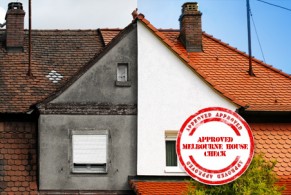Building inspections and their objective
The main purpose of a building inspection prior to purchase is to provide advice to the client regarding the condition of the dwelling at the time of the inspection. A building inspection considers and deals with any evidence of structural damage and conditions conducive to structural damage. It deals with any major defects in the condition of secondary elements and finishing elements and also any collective minor defects.
Serious safety hazards are also commonly documented at the date and time of inspection, an example of which may be
- hot down lights in the roof space in contact with or close to timbers or insulation.
These conditions may be considered a fire hazard. A limiting factor of a building inspection prior to purchase is that the inspection is limited to the readily accessible areas of the building and the site and it is based on a visual examination only of the surface work, and it does not deal with the carrying out of any tests. Nor does it allow for any invasive inspection if defects are suspected.
In providing an overall assessment of a dwelling the building is normally compared with a building that was constructed in accordance with the generally accepted practice at the time of construction and compared also with a house that has been maintained such that there has been no significant loss of strength and serviceability.
A further objective of a building inspection prior to purchase is to expose any hidden defects in a building that may have been concealed purposely by a vendor in order to sell the house. Conditions such as concealed subfloor doors or locked rooms are a common occurrence and in these cases caution should be taken and further questions asked. Other concealed defects might include the presence of new subfloor timbers that may have been replaced, or new skirting boards also, both conditions that may suggest past termite damage.
Another common consideration of a building inspection is given to whether a house has been recently altered. It is vital to establish whether the correct documentation has been sort if recent works have been undertaken, including permits and registrations.
Melbourne House Check conduct thorough building inspections and can be contacted on 1300 729 352.







Locked doors are signs that something is being concealed, so this should be a good red flag when planning to buy a house. A thorough building inspection should be carried out before a purchase is to be made. It would be best to spend some bucks on building inspection than to spend a fortune in damage construction repair. Just be sure that a dependable building inspector is hired so money spent won’t be wasted.
One of the most effective ways to guard your investment and ensure the quality of your new home or multi-family property is to secure a building inspection report from a reputable, professional inspection expert. Look for a building inspector who specialises in the evaluation of new constructions. Because so many buyers have the common misconception that building inspection reports aren’t important for new constructions, some companies may devote little time to the evaluation of new properties. With the right building professionals and an exceptional building inspector, you can ensure the home of your dreams is structurally sound, well-constructed and of the utmost quality.
Hi David,
You would be surprised at the high number of locked doors we find to rooms in order to conceal defects, the most common of which are subfloors. Recently we found that a vendor had excavated under the house to make more room which had fully exposed the concrete footings around the perimeter. He had also removed stumps to make more space. This is considered a major structural defect and the issue in this particular case was that after realising the problem that he had caused, he decided to sell the house. He purposefully concealed the excavation by draping tarps down over the footings and locked the door to the subfloor denying access to all. We got asked to conduct the building inspection post settlement and discovered the tarps which he had left behind. In Victoria our property law says it is buyer beware when it comes to purchasing a house, so it is always vital to have a pre purchase inspection. Locked doors and denied access is never acceptable. Kind regards, Brad.
Hi Jack,
Believe it or not we seem to find more defects in new house constructions rather than old establish houses. Having a building inspections just prior to handover of a new house is often overlooked due to either the excitement of moving in or the sheer frustration of the building process just passed. It’s also worth noting that the old saying “you can’t judge a book by its cover” is often the case, whereby a good looking house should never be trusted not to have serious defects. Your comment regarding the importance of a good inspector with experience in new home inspection is correct. Defect identification is only part of the process. Communication and documentation of the defects is a vital part of the inspection process also. New house pre-handover inspections are always vital in protecting the asset.
Kind regards, Brad.